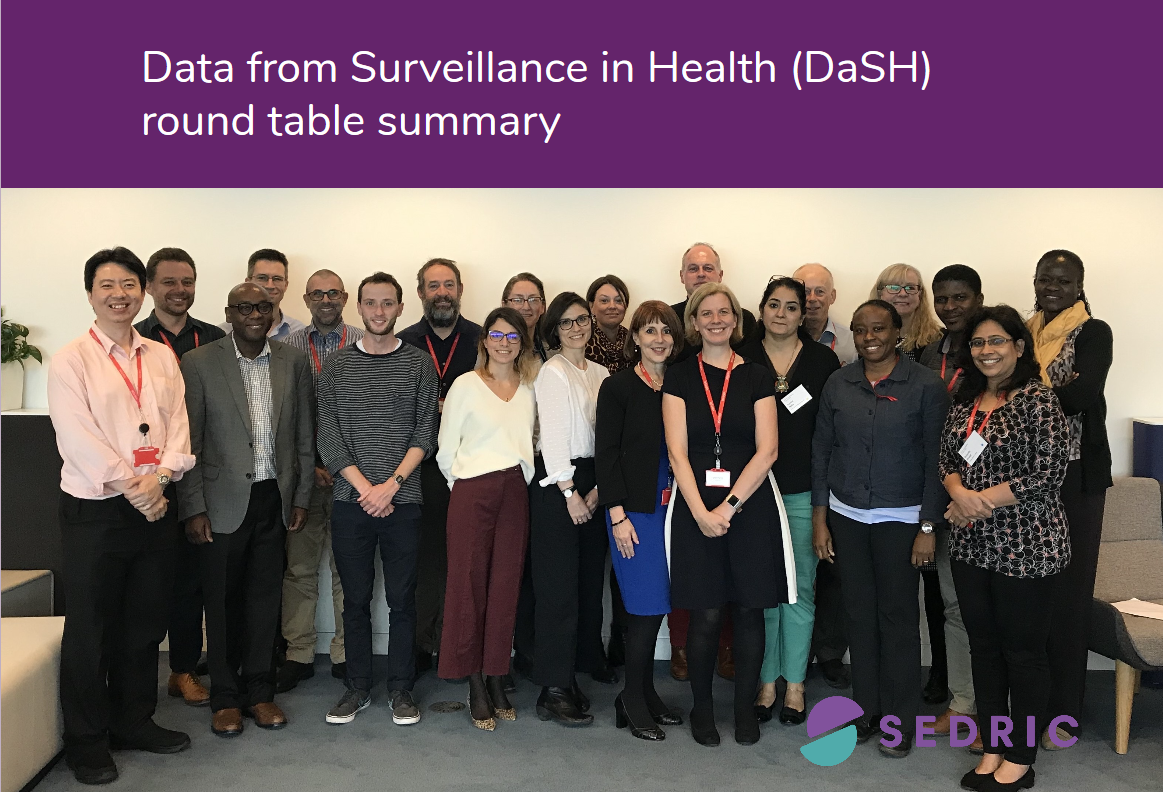Data from Surveillance in Health (DaSH) round table summary
11 December, 2019
Francesca Chiara

The number of AMR surveillance
programs worldwide is expanding rapidly. To maximise the global benefit from
this effort, data should be comparable across programs. In October 2019, SEDRIC
convened a meeting to discuss how best achieve this. The workshop was attended
by a wide range of relevant stakeholders including the Fleming Fund, US-CDC,
European-CDC, Africa-CDC, Indian and Nigerian national AMR surveillance
networks and several research groups.
Discussions initially considered the purpose of generating AMR surveillance
data, and considered its use at several levels including:
- For the optimal treatment of patients;
- For aggregation at local, national and global levels to inform better treatment guidelines;
- For policy makers at national and global levels to better understand the burden of drug resistant infection and its implications for public health and economic planning.
Each of these levels requires a different information, however surveillance systems need to impose the minimum burden on overstretched health staff whilst providing the data needed to produce useful information at all these levels.
Key takeaways:
- We need to formulate practical advice on how to improve AMR surveillance
AMR data are generated from a diverse sample types and patient populations. There is currently a lack of advice on how to maximise the value of the surveillance by selecting the most informative data regarding who, when and why samples are taken and what patient level data should be captured. One size does not fit all, so it is important that advice presents options that can be selected between to suit local needs.
2. Data capture must be streamlined to facilitate local analysis and sharing
There are practical barriers to data collection, analysis and sharing. Busy staff in hospitals and clinics have other call on their time, minimising the time cost of surveillance is therefore a priority. There is a need for a Laboratory Information System for AMR as current systems are inadequate.
During the meeting, we agreed on four next steps, which are now designated with acronyms (if you’ll forgive us, it makes them easier to refer to):
1. ACORN (A Clinically Oriented AMR Surveillance Network): This Wellcome-funded network was launched earlier this year by Paul Turner and Rogier van Doorn. DaSH supports this pilot of a model surveillance system, and will await feedback from the pilot.
2. PEAS (Protocols for Extended AMR Surveillance): Data Framework “The Framework of a Surveillance System”. A subgroup of people was formed to work together to define the key components of a successful surveillance system.
3. LENTILS (LIMS for Enhanced AMR Data Collection and Analysis): A subgroup was formed to explore the potential of developing a freely available software system.
4. BEANS (Better Metadata in AMR Surveillance):This subgroup will look at data quality and standardisation to allow comparisons between data sets, including patient clinical background and laboratory procedures.